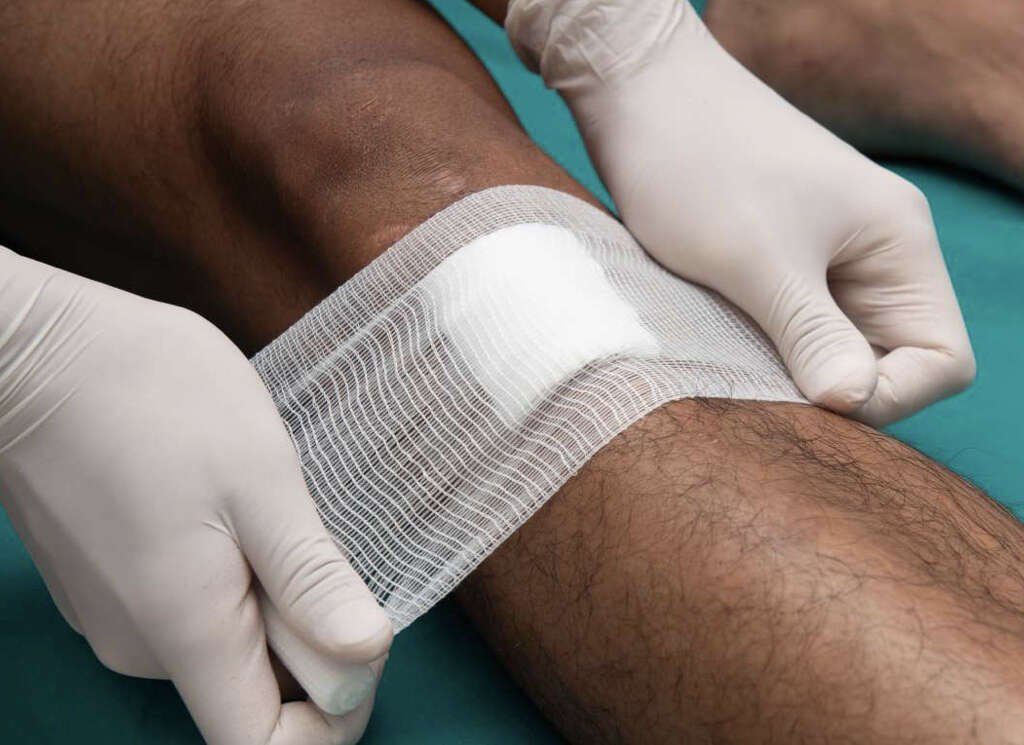What Is Necrotizing Fasciitis?
Flesh-eating bacteria is the stuff of nightmares, and if you believe the hype, it is a common occurrence for tropical vacationers worldwide. Fortunately, necrotizing fasciitis is a rare tissue infection, so most people can enjoy their time off in peace. However, for the 700 to 1,200 cases that occur annually, patients need to understand the necessity of receiving quick treatment.
While the infection is rare, it progresses rapidly, causing the inflammation and probable death of areas of the fascia. Without quick intervention, patients can lose limbs and their lives. It is necessary to understand the causes and symptoms of this condition to protect yourself against infection and delayed response.

1. What Causes Necrotizing Fasciitis?
Necrotizing fasciitis is a bacterial infection caused by Group A streptococcus, vibrio vulnificus and vibrio alginolyticus. The bacteria may exist in hot tubs, swimming pools, lakes and oceans. Vibrio is more common in brackish water or saltwater and is likely responsible for more recent seawater exposure.
Most cases of necrotizing fasciitis occur because of open wounds or breaks in the skin. The entry point needn’t be massive. Insect bites, scrapes, puncture wounds, surgical incisions and burns all leave vulnerable openings in the skin, which the bacteria can then enter through. However, blunt force trauma may also lead to an infection of necrotizing fasciitis.

2. What Are the Signs and Symptoms of the Condition?
Warning signs of necrotizing fasciitis include swollen, red or warm areas of skin — these areas will expand quickly. The skin within these areas may also be sensitive to touch, even beyond the redness or swelling. Do not ignore these warning signs. Go to a doctor for a diagnosis.
Waiting can lead to more debilitating symptoms like fatigue, dizziness, nausea and diarrhea. You may also experience black spots on the skin along with blisters and ulcers. The skin around infected areas may change color, and pus may ooze from the contaminated site. The key to surviving necrotizing fasciitis is early treatment.

3. How Is the Infection Diagnosed?
Necrotizing fasciitis is challenging to diagnose because it can appear similar to other illnesses early on. Doctors will ask several questions to determine the likelihood of infection to speed up the treatment process, but they may start medications before receiving results from tests and biopsies because a rapid response is necessary.
Visual inspection of the infection site can help in diagnosing the condition. A doctor may rely on several tests to confirm the diagnosis, like tissue samples, bloodwork, CT scan, ultrasound and MRI of the area.

4. What Is the Treatment for Flesh-Eating Bacteria?
Because of the rapid progression of the infection, doctors will hospitalize suspected patients. IV antibiotics and surgery are the most common treatment options for patients with necrotizing fasciitis. While medicines are the first line of defense, most patients will undergo surgery to stop the infection.
Even intravenous antibiotics are at a disadvantage, despite the use of veins, ensuring quick transportation to infection sites. The flesh-eating bacteria often reduces blood flow and kills tissue restricting the antibiotic access, leaving surgical intervention as the only viable option. In severe cases, patients may need blood transfusions and regular debriding of necrosis.

5. Who Is More Likely to Contract Necrotizing Fasciitis?
While the media can overplay the severity of infection rates and play into fear for ratings, doctors and scientists do not have that luxury. Necrotizing fasciitis is a rare tissue infection, only affecting 700 to 1,200 people per year. While any number is unfortunate, the odds of contracting this condition are minuscule. However, some people should be more concerned than others.
People with weakened immune systems are more likely than any other group to contract necrotizing fasciitis. Diabetes, cancer, cirrhosis of the liver and kidney disease are all illnesses that weaken the body’s ability to fight infections. Chickenpox can also lead to rare complications, including necrotizing fasciitis.

6. What Complications Can Stem from the Infection?
Necrotizing fasciitis can cause shock, organ failure and sepsis — all of which are potentially fatal. Approximately one in three patients will die from the infection. However, even if you survive, lifelong complications from the loss of limbs or removed tissue are common.
Patients may also come down with streptococcal toxic shock syndrome, also caused by group A streptococcus. The additional infection involves multiple organ failure and low blood pressure, forcing the body into shock. Nearly six out of 10 patients with the combination of both infections will die.

7. Is Necrotizing Fasciitis Contagious?
While there is a small likelihood of necrotizing fasciitis being contagious, doctors consider it only a rare occurrence. Most cases only occur at random, making researchers and medical professionals describe the condition as noncontagious while submitting to the theoretical possibility.
However, the medical community is so confident of the limited spread of the infection between people they do not prescribe preventative antibiotics to close contacts of patients. Maintaining proper hygiene is often enough to prevent the spread from one person to another.

8. Is It Necrotizing Fasciitis or Something Else?
In the early stages of the infection, necrotizing fasciitis can resemble other illnesses and diseases. One such infection is cellulitis. Both conditions stem from strains of streptococcus leeching into the skin through cracks or breaks in the tissue, and they both lead to sensitive swollen and red skin.
However, medical professionals point to a keen difference in the lethality of the infections. Doctors consider cellulitis as superficial and necrotizing fasciitis as deep and potentially life-threatening. While doctors may need to biopsy to confirm one or the other, knowing a patient’s history can provide clues into the specific likelihood of one infection over the other.

9. How Do You Prevent This Condition?
The best ways to prevent an infection of flesh-eating bacteria are through proper wound care and avoidance of high-risk areas. For severe wounds, see a doctor for treatment and care instructions. For minor injuries, keep the area clean with soap and water, and keep open and draining wounds covered.
If you have an open wound or a weakened immune system, avoid areas where streptococci and vibrio bacteria thrive. Do not go in pools, hot tubs, oceans or lakes. Bodies of water are a risk.

10. What Is the Prognosis?
With necrotizing fasciitis alone, patients have a survival rate of approximately 66%. However, if a patient contracts an additional streptococcal infection, that percentage can drop to only 40%.
Necrotizing fasciitis is a rare tissue infection with many severe complications. The primary takeaway for potential patients is to receive treatment as early as possible because rapid intervention is often key to survival. While unlikely, if you have any of the signs or symptoms of this condition, get to a doctor immediately for help.










